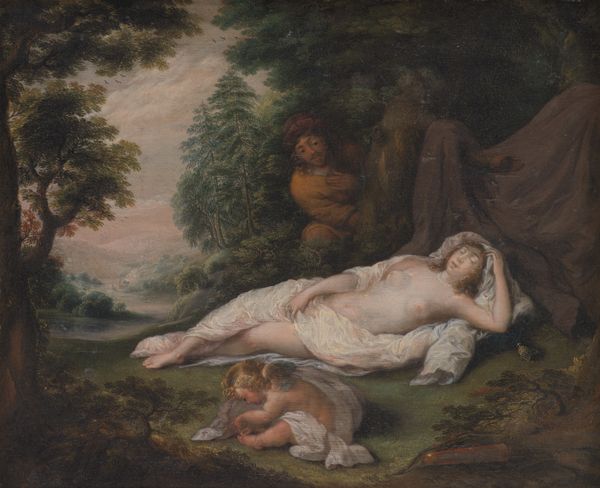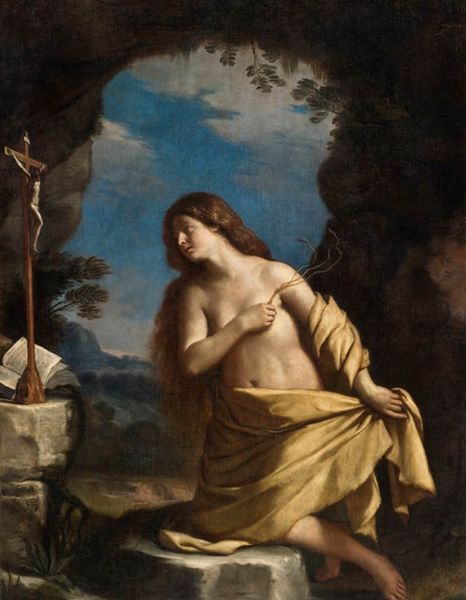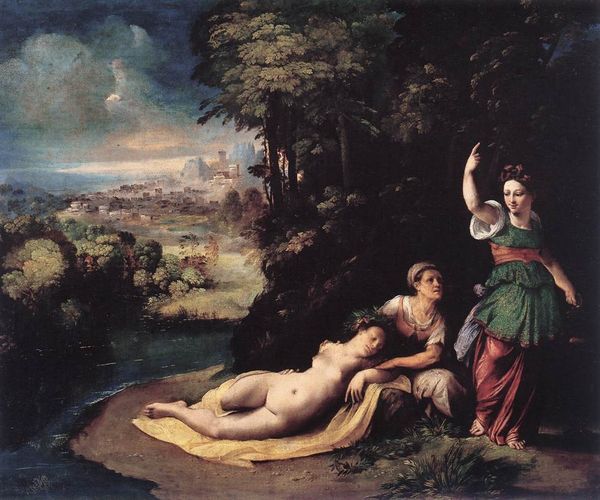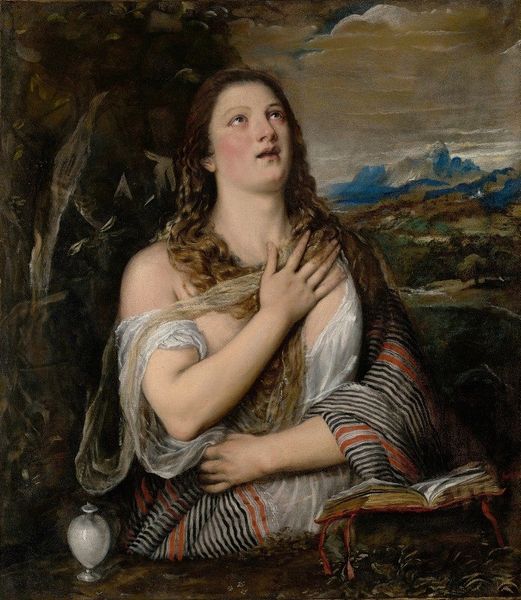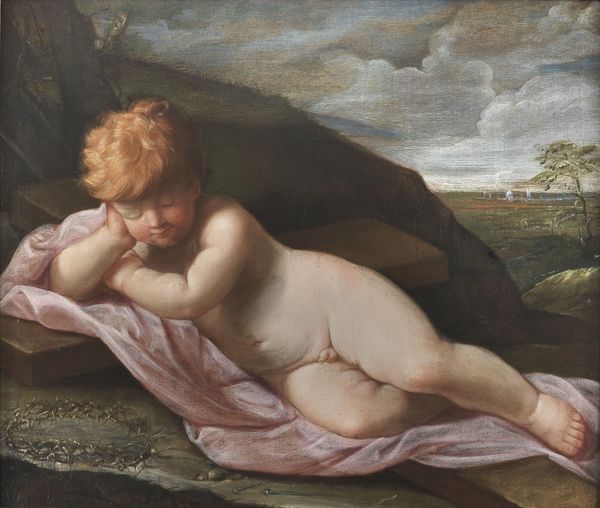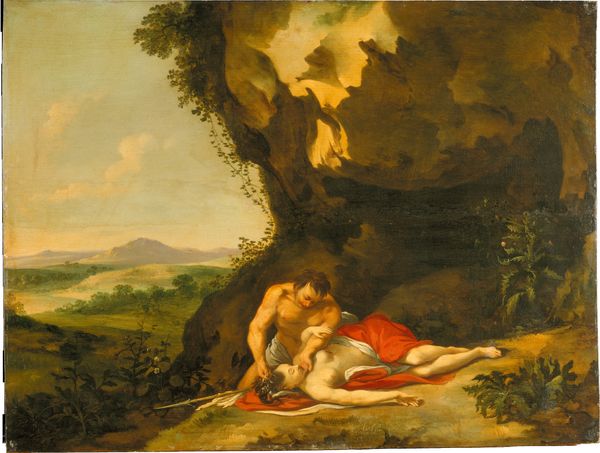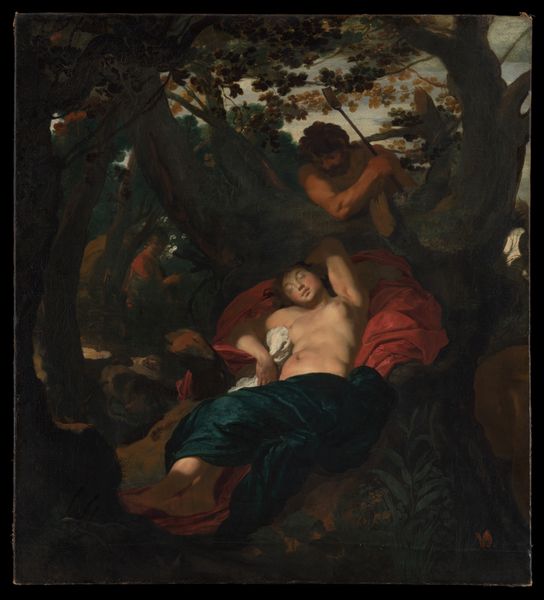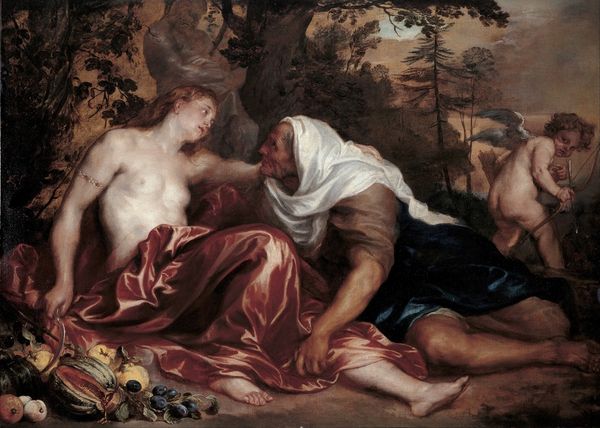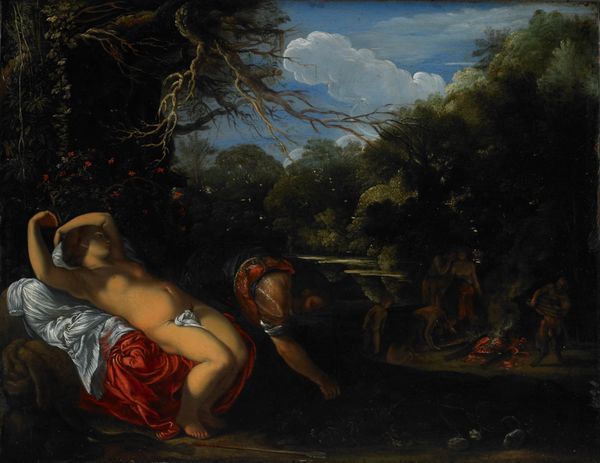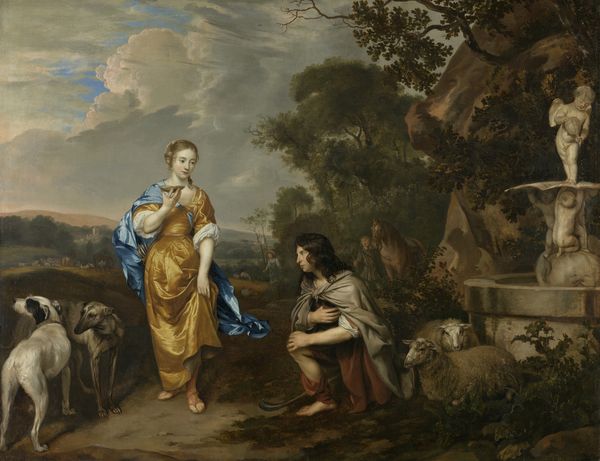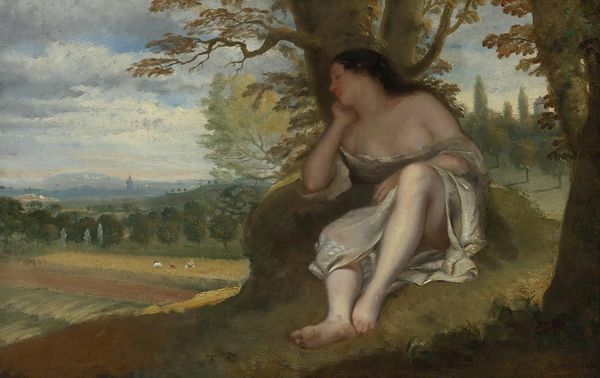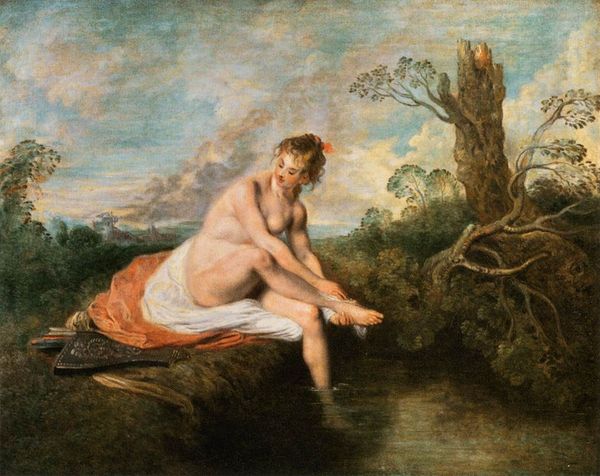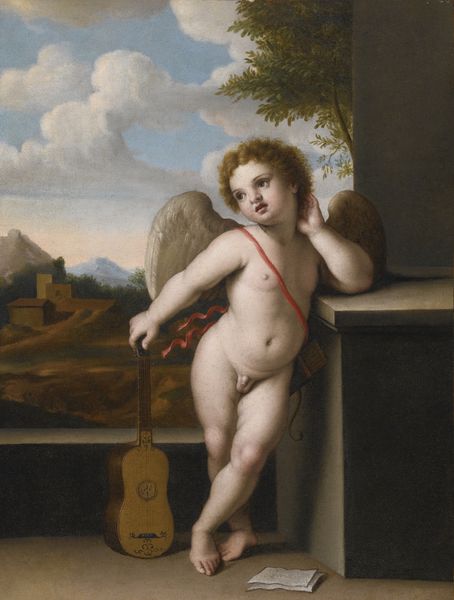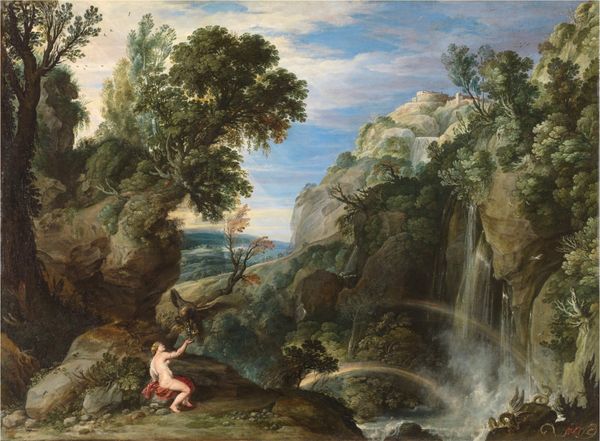
painting, oil-paint
#
portrait
#
baroque
#
painting
#
oil-paint
#
landscape
#
oil painting
#
vanitas
#
italian-renaissance
#
portrait art
Copyright: Public domain
Editor: Here we have "Mary Magdalene in the Desert," an oil painting attributed to Annibale Carracci. The most striking thing to me is the very deliberate placement of the skull – the texture seems almost to clash with the smoothness of her skin. What strikes you about the piece? Curator: What fascinates me are the processes implicit here. Oil paint itself, a relatively recent technology at the time, enabled a level of detail unthinkable with tempera. And note how the artist uses that to create a deliberate contrast—as you say—between the highly finished flesh and the roughly rendered skull. One is organic, living, consuming; the other is the remains after the processes stop. Editor: So, it’s not just a symbol; it’s about the material transformation? Curator: Precisely! The "Vanitas" theme wasn't merely about remembering death. Consider what it would take to acquire pigments at this time, to grind them, to mix them. Each brushstroke becomes an act of consumption. Magdalene’s implied spiritual journey, then, is entwined with material realities. What does it mean to depict such supposed asceticism, using the richest materials available? Editor: That reframes the narrative. It makes the saint, and the landscape, almost products themselves. I was focused on the religious aspect of her seclusion. Curator: It forces us to question the systems supporting this image – the patron, the trade networks, the labor. The desert, a place of supposed purification, is here a stage for a carefully constructed performance, thanks to the tools available for a certain economic cost. Editor: So, this wasn’t just a devotional image but a statement about production, materials, and maybe, consumption? Curator: Indeed. By emphasizing the materiality and production, we begin to peel back layers of ideology and see the socioeconomic context at play. It helps appreciate how wealth shapes our narratives. Editor: I hadn't thought of that! Thanks for providing such an illuminating view. It’s a complex relationship.
Comments
No comments
Be the first to comment and join the conversation on the ultimate creative platform.
